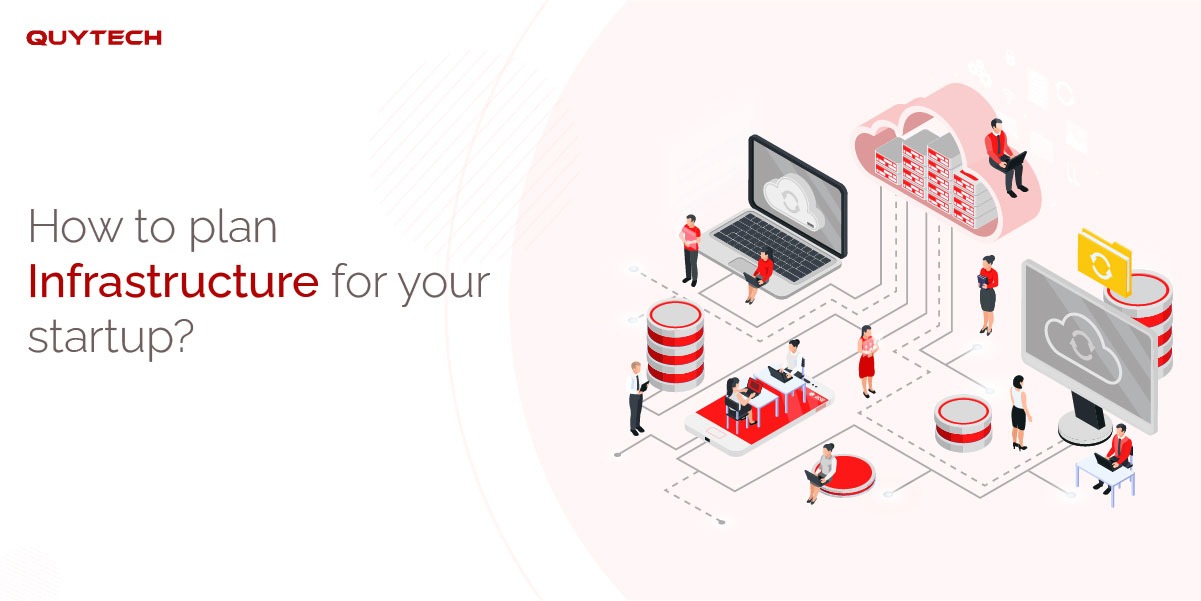Many businesses have mobile applications at the top of their priority, but developing an application is far more difficult. That’s why it is vital to plan ahead. Infrastructure is required prior to the introduction of any new service. In today’s note, we’ll discuss how to plan infrastructure for your startup!
The aim of this note is to assist you to focus on the users that your solution gives to your users while reducing the deal of time and resources you spend on infrastructure.
So, without any further ado, let’s get straight into it!
While planning your product launch and subsequent growth, it’s important to think about what infrastructure is required for that growth.
How to Plan the Infrastructure?
Typically for an MVP case, a target user base size is around 10,000 users.
Subsequent scale-up of the user base depends on the marketing as well as investment gathered.
Although a lot of companies would say that the technology and the software they have build will scale up endlessly, it’s actually not true.
It’s true that the front end i.e the app remains the same throughout, but the backend architecture will have to change based on the number of users you plan.
When to Scale Up?
There are various stages where the backend infrastructure needs to be scaled up from time to time.
Creating a huge infra at the time of MVP is not advisable mainly because of 2 reasons:-
1. You don’t have a product-market fit and the direction of the app will depend entirely on how the users take up the app.
2. Cloud’s ongoing costs can increase substantially. At the MVP stage, you would not like to burn money just on the cloud without getting many users. We have seen a lot of startups burn their initial seed money just on cloud services, which could have been avoided by careful planning.
An initial MVP can support up to 10,000 Monthly Active user base. Unless the app is content-heavy, the infrastructure required is simple and straightforward. You may consider having a one or two cloud based server setup.
Let’s say your app is now being used proactively by these 10,000 users and they have started recommending them to other users. It’s important for their day-to-day activity and you can’t risk your app going down in any scenario.
Such a situation requires a High Availability environment with multiple servers in standby mode. The database also has to be resilient to faults and should something adverse happens, you should have a backup mechanism to bring that database back online.
How to Ensure Smooth Running of Your App?
This is where the cloud’s High availability environment comes into the picture. The backend servers should be configured via a load balancer and provide a failsafe mechanism and an auto-scalable database.
Typically this will last till 100k / 200k users.
From 100k to 1 million users, multiple factors start to come into play. Depending on the type of service your app provides specific service may need a better scaling mechanism than the rest. E.g If the app is relying heavily on-location upon service, then that needs special attention while scaling up.
This is where you need to have multiple server clusters, Dev Ops with CI/CD pipeline, cache store, and other heavy tech stuff to ensure the smooth running of your app.
The same is the case while scaling from 1 million to 10 million users and beyond. By that time you would either have a decent revenue stream or have substantial investment available to pump up the backend infra.
Ending Note
If you’d like to build a startup or anything else, we hope this note has shown you that the infrastructure aspect isn’t as difficult as you think if you apply the appropriate ways. The approaches described in this note are the most effective. Set it up correctly from the start, and you’ll be on your way to sustaining rapid growth once you make headway. We wish you the best of success!
If you still have any queries or want to plan infrastructure! Contact us, Quytech would love to assist you!
If you’ve enjoyed what’ve you read, please share it with others who might find this useful.
More Inquiry: info@quytech.com
Visit: www.quytech.com
